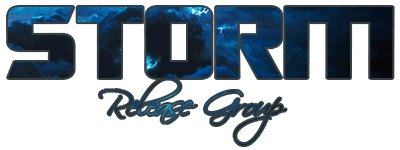Bluetooth Low Energy The Developer's Handbook [Epub & Mobi]~StormRG~seeders: 23
leechers: 1
Bluetooth Low Energy The Developer's Handbook [Epub & Mobi]~StormRG~ (Size: 22.32 MB)
Description
Bluetooth Low Energy- The Developer's Handbook
Author: Robin Heydon Published: Oct. 28 2012 Publisher: Prentice Hall; 1 edition ISBN: 978-0132888363 Format: Retail Epub and Mobi Reader Required: Epub- Adobe Digital Editions, Calibre, MoonReader for Android Mobi- Kindle app, Calibre, MoonReader for Android NOTE: No PDF available, please use a reader, as above. If you want it to scroll like a PDF just use Calibre and click scroll mode (top right) after opening the book Tested on the above readers with no problems on laptop and Android tablet. Don't hesitate to PM me if you have any questions or problem with the download, as comments on the torrent are easy to miss. Please allow a couple seconds for the seedboxes to kick in, then it should move pretty quick. Enjoy! Book Description Publication Date: Oct. 28 2012 | ISBN-10: 013288836X | ISBN-13: 978-0132888363 | Edition: 1 The First Complete Guide to Bluetooth Low Energy: How It Works, What It Can Do, and How to Apply It A radical departure from conventional Bluetooth technology, Bluetooth low energy (BLE) enables breakthrough wireless applications in industries ranging from healthcare to transportation. Running on a coin-sized battery, BLE can operate reliably for years, connecting and extending everything from personal area network devices to next-generation sensors. Now, one of the standard’s leading developers has written the first comprehensive, accessible introduction to BLE for every system developer, designer, and engineer. Robin Heydon, a member of the Bluetooth SIG Hall of Fame, has brought together essential information previously scattered through multiple standards documents, sharing the context and expert insights needed to implement high-performance working systems. He first reviews BLE’s design goals, explaining how they drove key architectural decisions, and introduces BLE’s innovative usage models. Next, he thoroughly covers how the two main parts of BLE, the controller and host, work together, and then addresses key issues from security and profiles through testing and qualification. This knowledge has enabled the creation of Bluetooth Smart and Bluetooth Smart Ready devices. This guide is an indispensable companion to the official BLE standards documents and is for every technical professional and decision-maker considering BLE, planning BLE products, or transforming plans into working systems. Topics Include BLE device types, design goals, terminology, and core concepts Architecture: controller, host, applications, and stack splits Usage models: presence detection, data broadcasting, connectionless models, and gateways Physical Layer: modulation, frequency band, radio channels, power, tolerance, and range Direct Test Mode: transceiver testing, hardware interfaces, and HCI Link Layer: state machine, packets, channels, broadcasting, encryption, and optimization HCI: physical/logical interfaces, controller setup, and connection management L2CAP: channels and packet structure, and LE signaling channels Attributes: grouping, services, characteristics, and protocols Security: pairing, bonding, and data signing Generic Access Profiles: roles, modes, procedures, security modes, data advertising, and services Applications, devices, services, profiles, and peripherals Testing/qualification: starting projects, selecting features, planning, testing, compliance, and more Sharing WidgetAll Comments |


Bluetooth + penetration_testing = Bluetooth_exploit